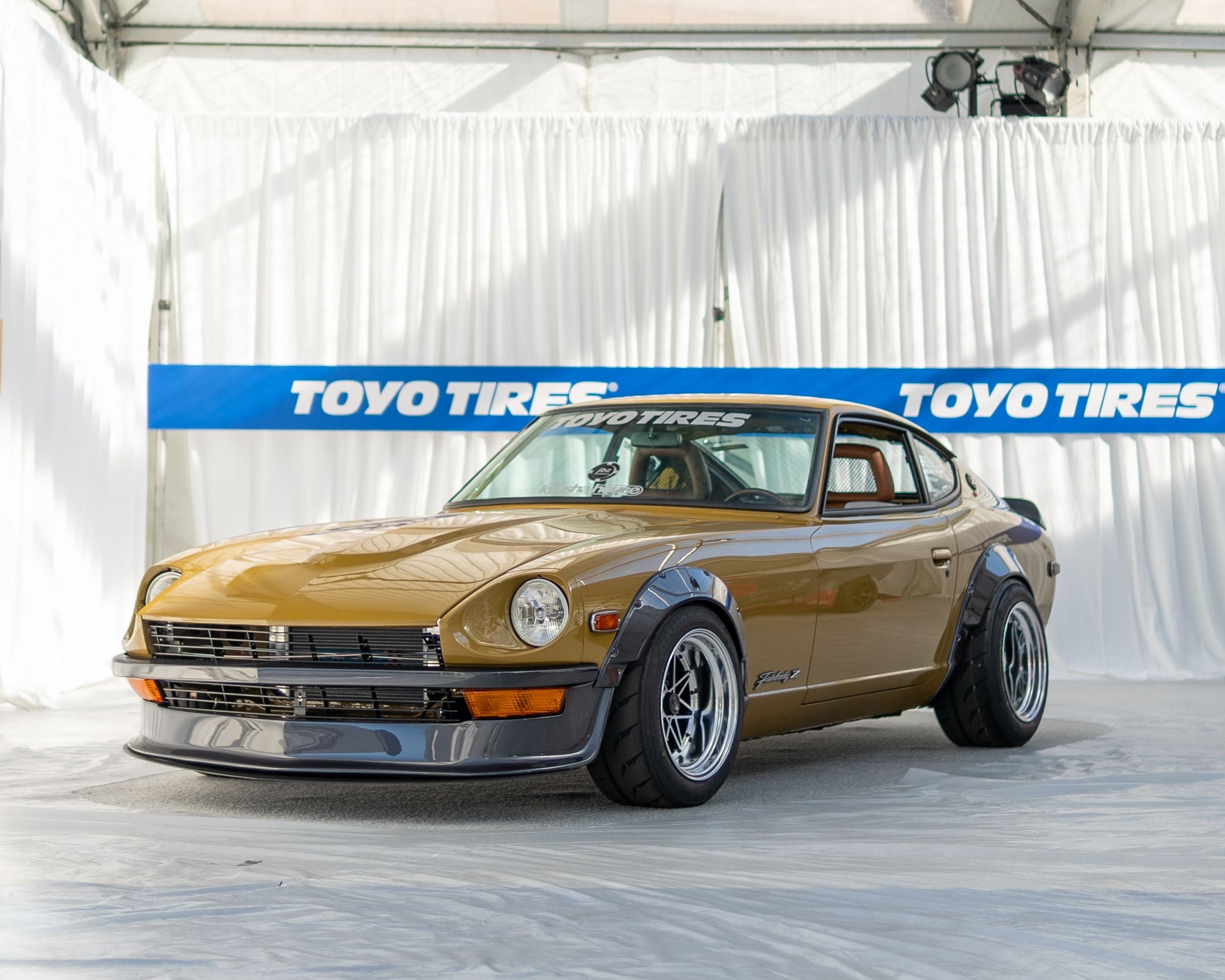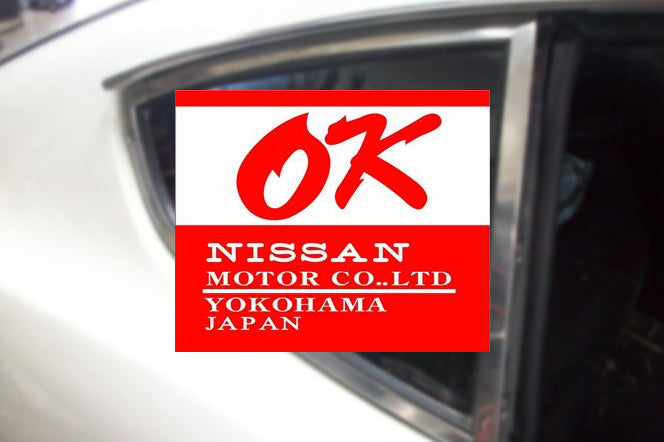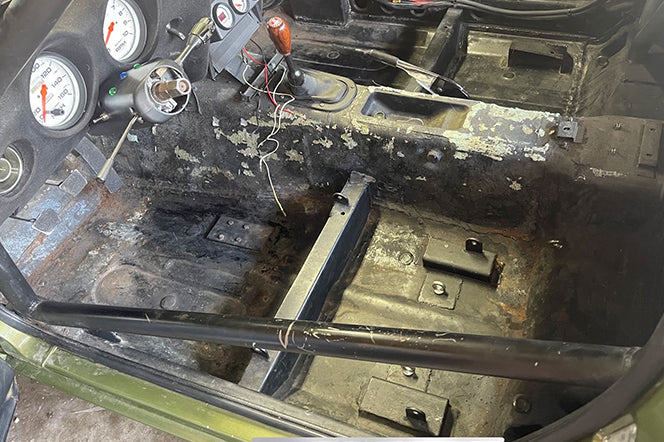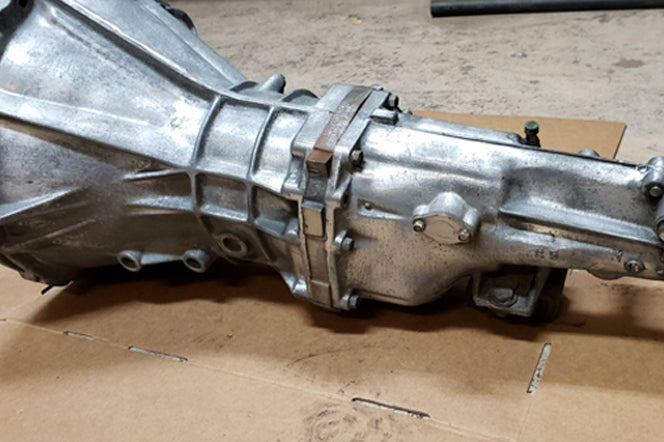Have you ever seen those small "OK" stickers on classic Datsun Z cars? Little details like those can catch your attention if you're like me - and it makes you ask yourself about their story.
For collectors and car enthusiasts, the "OK" inspection stickers on those Datsun Z cars are charmingly important and are really rooted in Z culture.
Let's talk about why you'll see these stickers on Z cars and what they mean!
Disclaimer: This article is authored by a member of the Skillard community and reflects their personal views, not necessarily those of Skillard. We welcome your feedback and corrections in the comments to help us continually improve this content.
Table of Contents
History of the "OK" Inspection Sticker
The first time I saw the "OK" Inspection Sticker on a Datsun Z was on a friend's 280Z, parked on a sunny street. This little decal was on the passenger side window, and I've never seen one before. It said "OK - Nissan Motor Co. LTD - Yokohama Japan", with a red and white design.
So, what do these mean? It's basically a mark of quality that Nissan added to cars fresh off the production line - it pointed to the fact that the car had passed all strict inspections and met Nissan's high standards before it ever hit the road.
Nissan introduced the Datsun 240Z in the late 1960s during their entry into the competitive North American sports car market. They were trying to impress with speed and looks - they knew building trust from the start was important. Each Datsun with this sticker had undergone a complete inspection, which makes sure everything from the engine's performance to the paint's appearance was perfect. I have always respected Nissan for its commitment to quality.

These stickers are really cool for collectors and enthusiasts, too. They serve as a mark of authenticity, and they symbolize a time when every detail was important, and assurance was provided directly from the factory. It kind of reminds me of the stickers that some people leave on their hats that make them look brand new - Datsun owners will buy these stickers and put them back on their car, which makes them look one step closer to how they left the factory.
Pretty cool, huh? They're a small part of automotive history.
Why Does This Matter to Collectors?
It always amazes me how something as small as an "OK" inspection sticker can become so important. Usually tucked away on the inside quarter window - this little decal shows much more than you'd expect.
For collectors like us, finding an original "OK" sticker is important because it points to the car that retains its factory condition or has been restored with great care to its origins. If it's a 240Z, a 260Z, or a 280Z, that sticker acts as a time capsule approval, stamped right from its birth at the factory. Finding an authentic sticker is seriously rewarding, and it lets everyone know the car meets all original standards and passes the important pre-delivery inspection quickly and easily.
We usually have to work hard to bring these old beauties back to top condition. So, finding one of these stickers unscathed brings real excitement, and it represents a real piece of history - preserved just as it was - which is important for restorations you're trying to be as historically accurate as possible. Some of these cars sell for hundreds of thousands of dollars.

In the space of collecting, original features like the "OK" sticker are a good sign, and they can really increase its value. For enthusiasts and potential buyers - the authenticity and careful maintenance seen by these stickers can really affect decisions. If the sticker is real and it's still in great shape after 50 some years, that's a pretty good sign for the rest of the car, right? Almost like it was kept in a bubble and protected from the outside world. This sticker is just one extra indicator for serious collectors.
Varieties of the "OK" Inspection Sticker
Each "OK" inspection sticker has its own beauty and story. The OEM Japanese stickers, originally from Nissan's factories in Japan, were the standard for authenticity and maintaining a car in its factory-fresh condition. Collectors and restoration enthusiasts usually look for these to keep or help with the car's historical appeal.
Not everyone can get the original stickers, though, but you might want to replicate this same look. If that's the case, you're definitely not alone. This is why aftermarket replicas are helpful - they basically give you a way to achieve that classic Datsun Z look without needing a 6-7-figure museum-grade car that you can't actually drive because it's too expensive.
Companies like Zeddsaver make these replica OK stickers. Some are even made in Japan to make sure they match the iconic bright red color and sometimes show the cool hiragana signatures found on the original OK sticker.
Some places will even sign your name in Japanese with a hiragana script. That's a cool custom touch, right?
The English versions of the stickers, which are usually used on exported cars, are also pretty interesting because they show the widespread reach of the Datsun brand during its best days. While they may not be as desired as the Japanese OEM versions, they still hold serious value for collectors focusing on cars destined for markets outside Japan.

Getting these stickers can be difficult, though. The original OEM ones are super rare, and making sure of authenticity needs some expertise and careful checking. It's pretty easy to fake a sticker, and it's not so easy to spot a fake from a real one. So, if you're a die-hard collector, you might be trying to track down one of these original stickers. But, if you're not planning on submitting your car to a museum or sending it off to an auction any time soon, you may be just fine with one of the replica stickers for 1/100th of the cost.
Still, it's a good idea to know what the real inspection stickers look like. There are stickers in English, stickers in Japanese, lighter red stickers, darker red ones, and so on. With all of these companies trying to replicate the sticker, you're connected to get a little bit of variation in quality and color. It's impossible to document them all. But they're stickers - just do your best to go by the photos, buy one, and check it out for yourself. Most are only a few dollars.
Where Should You Place the Sticker?
For a right-hand drive vehicle, the "OK" inspection sticker should be placed inside the quarter window on the passenger side. For a left-hand drive vehicle (that's most of the Z cars in the US), you should place it on the right side window and on the left side for a right-hand drive vehicle. I remember spending a long time trying to find out the correct placement on my own 260Z to make sure it looked just right. You don't want to put it on the wrong side of the wrong window, right?
Also, which makes sure everything is period-correct really improves the overall attitude. Imagine how off it would seem if the "OK" sticker were on the windshield or rear window. The job of these is to make your car look like it's fresh off the factory floor, right? But, it won't look that way if you put it on crooked on the wrong side or the wrong window!

I have attended a few car shows and Datsun meet-ups where these properly placed "OK" stickers start conversations. People appreciate that level of attention to detail because it sparks deeper conversations about the car's history and production quirks.
Correctly placing the "OK" sticker might seem unimportant but it really affects how enthusiasts view the car. If it's your first experience with a Datsun or if you're very experienced, these details can either help with or lessen the authentic feel of these legendary cars. It's definitely worth the effort!
Restoring a Datsun Z with Authentic Touches
It is great when you can find original "OK" inspection stickers. But, they are seriously rare, and the "real" ones you might find are usually fake. Luckily, some excellent replicas are available that work just as well - provided they match the original in design and material.
You can find these all over the place, just give it a quick Google.

Picking an original sticker can usually feel like a scavenger hunt. Factors like texture, the aging of the color, and the material all have important jobs. I usually look at car restoration forums or contact reliable vintage car parts suppliers who understand the importance of these features. You can always start with HybridZ or Ratsun, too - most users on here have heard of these.
Even though I appreciate modern improvements like upgrading to a big brake kit or fuel injection - paying attention to the small details is just as important. The replica sticker I chose looked identical to the original and came from a supplier famous for their careful nature in providing restoration supplies.
These stickers tell the car's rich history which to me is the essence of restoration. And they preserve and celebrate the legacy of the car!
How to Verify an "OK" Inspection Sticker
As far as authenticity goes, determining if an "OK" Inspection Sticker is real can be pretty difficult. These stickers - unlike their modern counterparts that focus on legal compliance - want to preserve historical accuracy. Authentic stickers from the 1970s have specific markings, a unique text arrangement, and a particular color fade because of aging. They also add a space for the inspector's signature on the back - an important authenticity indicator.
So, if you see a car with one that looks immaculate, it's not likely to be a real sticker. Even in an enclosed garage or warehouse, 50 years will definitely wear these stickers down, and they will start to break apart.

When you're looking for a reproduction of the "OK" Inspection Sticker, it is important to choose reputable vendors. Based on my experience, companies are more likely to give decals that closely match the original in quality and design. These stickers are designed to replicate the dimensions and appearance of the original ones aiming at restoration or aesthetic improvements for both LHD and RHD Z cars - depending on the model.
So, if you're serious about finding one of these stickers and you want a real one, you'll probably want to get some advice from an experienced Datsun collector who can confirm the accuracy of these stickers. I would strongly advise any collector or restorer to do the same. Consulting with experts and resources directed at verifying vintage parts is very important - this strategy will make sure the part is closely similar to the original and keeps the integrity of these classic cars! And, of course, it will make sure you're not duped into buying a fake sticker that was passed off as real.
Even though these things are small in size, these decals hold great importance in the collector community as they represent the car's final step off the assembly line.
Build Your Dream Car
Are you restoring a Datsun or making modifications to it? Things like these inspection stickers are fun, and you'll be happy to know there is growing aftermarket support for these cars, even 50 years later!
Skillard comes in here if you have a Z car and haven't seen our store. But you're in for a treat. If you're like me and enjoy mixing old-school attitude with modern performance, you'll like our products. At Skillard, we have a love for these classic Z cars. We've created a number of custom parts specifically for Datsun models, from the 240Z to the 280Z.
Our lineup features everything from sharp bumpers to sleek aluminum door cards and useful center consoles to smooth aerodynamic spoilers - all showing off our commitment to great quality and innovation.

Why settle for the basics when you can help with your performance? Our parts help with the look of your classic car but can help with its functionality as well, so you can take those brittle and cracked plastic pieces out and put in some high-quality powder-coated aluminum ones that will last you another 50 years! Each piece was built to fit your Datsun perfectly - making sure that every modification feels like it was always meant to be part of the car.
Why not visit Skillard.com now and look at our complete lineup of parts? Start turning your Datsun into a true head-turner and start your restoration process with us at Skillard, where we make your automotive dreams come true.






4 comments
Skillard Team
Hey JC! Love to hear it :-) OK
Hey JC! Love to hear it :-) OK
JC
Love this kinda info.. thanks, ok!
Love this kinda info.. thanks, ok!
Skillard Team
Hey Lin! I’m glad you found it interesting and I hope this post was deserving of an “OK” sticker as well 😆
Hey Lin! I’m glad you found it interesting and I hope this post was deserving of an “OK” sticker as well 😆
Lin Lillard
I thoroughly enjoyed reading about the original OK sticker!!
I thoroughly enjoyed reading about the original OK sticker!!